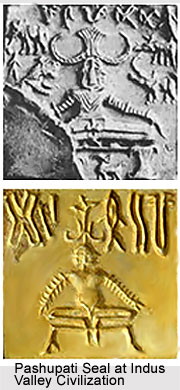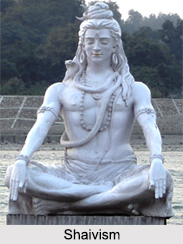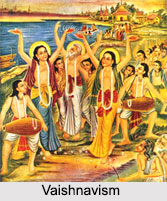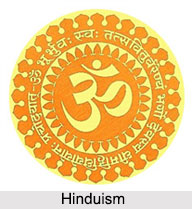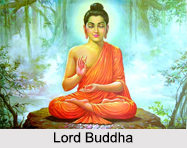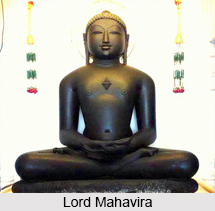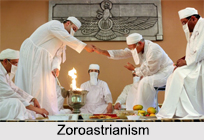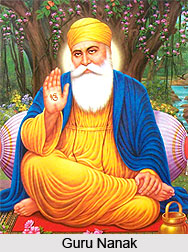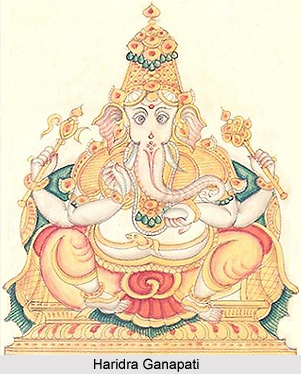 Haridra Ganapati means the one with the colour of Haridra or turmeric. It is one of the several forms of Lord Ganesha. This incarnation is also known as "Lord Ratri Ganapati". In this form, Lord Ganesha is covered with turmeric paste and appears in a yellow complexion, adorned with bright yellow garments. Moreover, Haridra Ganapati also wears golden vestment in His four hands.
Haridra Ganapati means the one with the colour of Haridra or turmeric. It is one of the several forms of Lord Ganesha. This incarnation is also known as "Lord Ratri Ganapati". In this form, Lord Ganesha is covered with turmeric paste and appears in a yellow complexion, adorned with bright yellow garments. Moreover, Haridra Ganapati also wears golden vestment in His four hands.
Iconography of Haridra Ganapati
The Hindu God, Haridra Ganapati is seated in a magnificent royal throne. He is described as having three eyes. In His right hands, the Lord holds His broken tusk and an elephant goad; while in his left hand, the elephant God holds Modaka, his favourite sweet and a noose. His single tusk signifies one-pointed focus; the goad pushes His worshippers forward; the modaka symbolises bliss; and the noose protects His devotees from various hindrances. It is also believed that the noose will hold the devotees close and the goad to move them forward.
Worship of Haridra Ganapati
Haridra Ganapati is a Tantric form of Lord Ganesha. Special mantras and Yantras are used in his worship. Haridra Ganapati is worshipped for wealth and well-being. He is also described to protect his devotees. Haridra Ganesha is used during the worship of Goddess Bagalamukhi for protection from enemies, rivals or competitors. An idol of Haridra Ganesha may be kept in cash box, place of business transactions, almirah, locker or place of worship etc for wealth, luck and enhancing business prospects.
Mantra for Haridra Ganapati
The Haridra Ganapati form of Lord Ganesha is worshipped with a devotional hymn known as the Haridra Ganapati Mantra. It is mentioned as follows-
"Haridrabham Caturbahum Haridravadanam Prabhum
Pashamkushadharam Devam Modaka Dantameva Cha
Bhaktabhaya Pradataram Vande Vignavinashanam".
Legend of Haridra Ganapati
As per Vedic Texts, Maa Peetambara was once so pleased that she blessed Ganesha with a golden aura and complexion. He was clad in peetambar (yellow cloth), he ate golden laddoos and his consorts Riddhi (Wealth) and Siddhi (Skill), both were clad in yellow clothes and amazing gold ornaments; were seated next to him. Third energy Buddhi (Intellect) also came to him and attached herself with Ganesha permanently.
